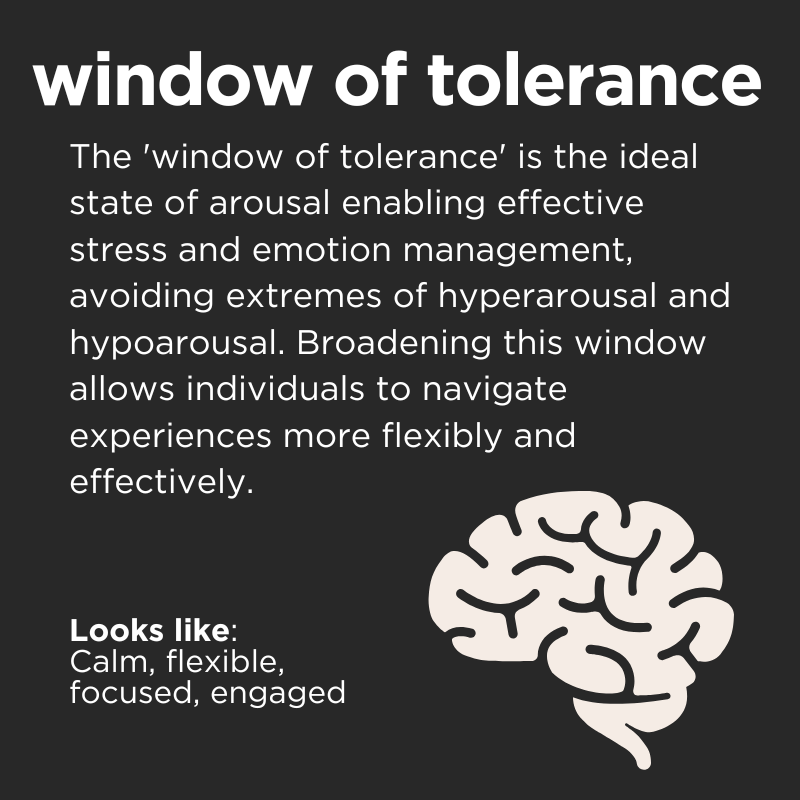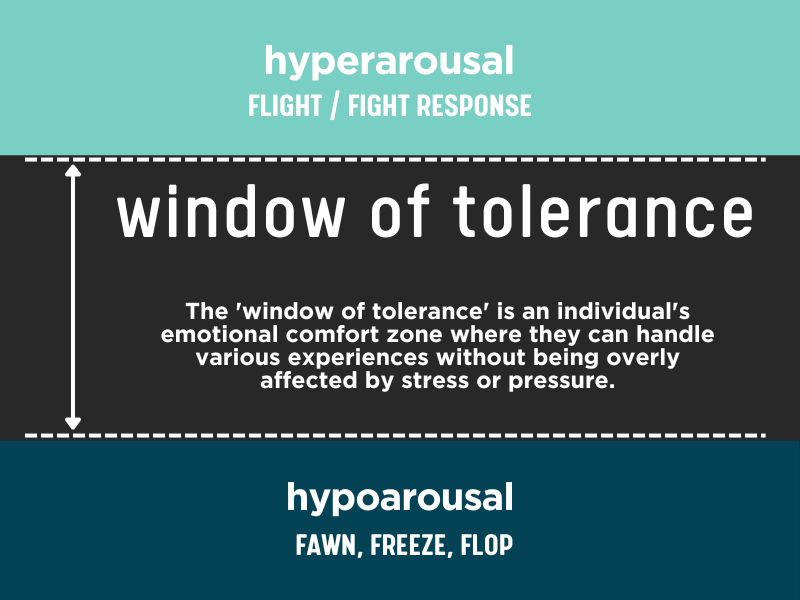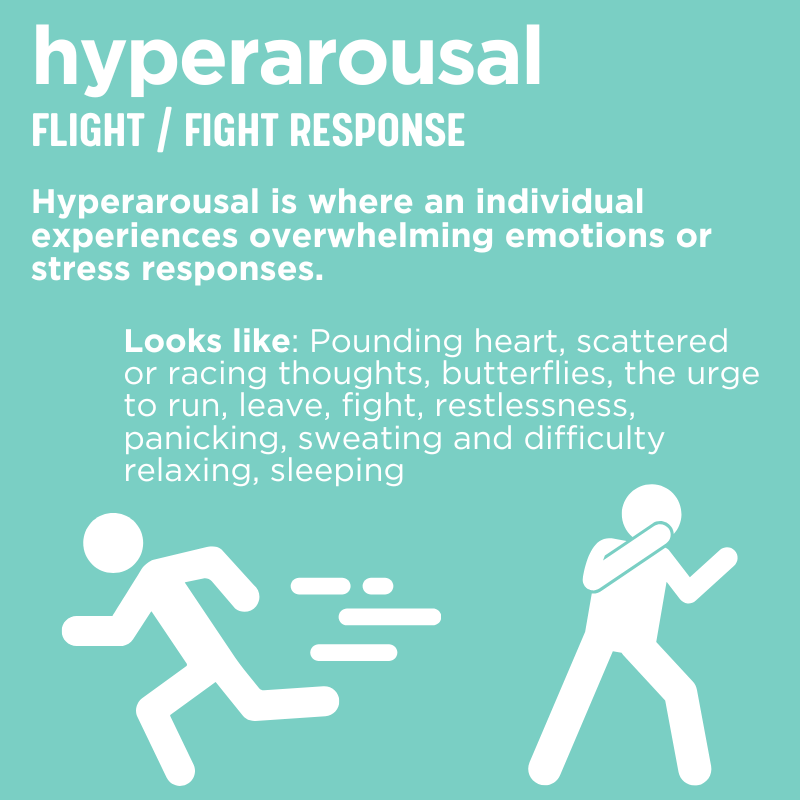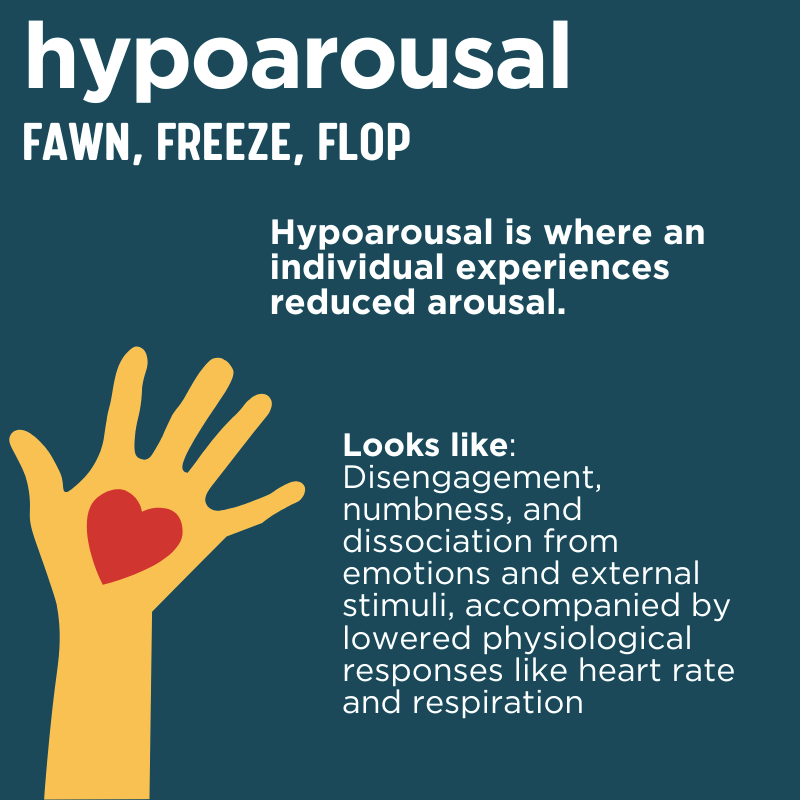The Window of Tolerance
The window of tolerance is a concept from neuroscience and trauma-informed therapy that describes the optimal state of arousal where a person can function effectively. The term was originally introduced by Dr. Pat Ogden and later expanded upon by Dr. Dan Siegel in his work on interpersonal neurobiology. Siegel has extensively discussed the window of tolerance in relation to trauma, emotional regulation, and brain function. His work emphasizes how individuals function optimally when they remain within their window of tolerance.
What Is the Window of Tolerance?
The window of tolerance represents the range of emotions and stress levels a person can comfortably manage before becoming dysregulated. Within this window, individuals can think rationally, process emotions, and respond adaptively to challenges. Outside of this window, they may experience hyperarousal or hypoarousal, leading to difficulties in functioning.

Why Is the Window of Tolerance Important?
- People who have experienced trauma, chronic stress, or adverse experiences often have a narrower window of tolerance, making them more easily dysregulated.
- Therapy and coping strategies aim to widen the window so that a person can stay regulated in a wider range of emotional experiences.
- Mindfulness, grounding techniques, and self-care practices help people return to their window when they become dysregulated.
Three States of Arousal
- Optimal Arousal (Inside the Window)
- Feeling regulated, calm, and present
- Able to manage emotions and make decisions effectively
- Engaged in social interactions and flexible in thinking
- A person in this state can tolerate stress and adapt to challenges without feeling overwhelmed or shutting down.
- Hyperarousal (Above the Window)
- Fight-or-flight response is activated
- Increased anxiety, anger, panic, or overwhelm
- Difficulty focusing or calming down
- Physical symptoms may include rapid heartbeat, shallow breathing, or muscle tension
- Common in trauma survivors who are easily triggered by reminders of past distress
- Hypoarousal (Below the Window)
- Freeze, fawn, flop (shutdown response)
- Feeling numb, disconnected, or dissociated
- Low energy, lack of motivation, or difficulty speaking or engaging
- Can manifest as depression, exhaustion, or feeling emotionally “checked out”



How to Expand the Window of Tolerance
- Therapeutic Approaches: Trauma-informed therapy (e.g., EMDR, Somatic Experiencing, or DBT) can help expand the window over time.
- Mindfulness & Self-Awareness: Helps recognize early signs of dysregulation.
- Grounding Techniques: Such as deep breathing, sensory awareness, or movement-based practices like yoga.
- Co-Regulation: Engaging with supportive people who help bring emotional regulation.
Key Takeaways
- The Window of Tolerance Represents an Optimal Zone for Functioning
- Two Types of Dysregulation: Hyperarousal and Hypoarousal
- Trauma and Stress Can Narrow the Window
- Expanding the Window of Tolerance Is Possible
- Recognizing Signs of Dysregulation Is Key to Managing It
- The Goal Is Not to Eliminate Stress but to Increase Resilience
1. The Window of Tolerance Represents an Optimal Zone for Functioning
- Within this window, individuals can think clearly, regulate emotions, and respond to situations adaptively.
- It describes the range in which a person can effectively manage stress, emotions, and challenges without becoming overwhelmed.
Return to Key Takeaways
2. Two Types of Dysregulation: Hyperarousal and Hypoarousal
Hyperarousal (Above the Window)
- Fight-or-flight response is triggered.
- Symptoms include anxiety, panic, anger, irritability, or feeling overwhelmed.
- The body may experience increased heart rate, tension, and difficulty concentrating.
Hypoarousal (Below the Window)
- Freeze or shutdown response.
- Symptoms include numbness, detachment, depression, or feeling emotionally disconnected.
- Individuals may feel tired, unmotivated, or unable to engage with others.
Return to Key Takeaways
3. Trauma and Stress Can Narrow the Window
- People who have experienced trauma, chronic stress, or adverse experiences often have a narrower window of tolerance, making them more easily dysregulated.
- This means they may quickly shift into hyperarousal or hypoarousal in response to stress.
Return to Key Takeaways
4. Expanding the Window of Tolerance Is Possible
- Mindfulness and grounding techniques (e.g., deep breathing, body awareness, meditation) can help bring a person back into their window.
- Co-regulation with supportive relationships (e.g., therapists, friends, or loved ones) can assist in emotional regulation.
- Therapy (e.g., Somatic Experiencing, EMDR, DBT, or CFT) can help individuals process trauma and develop better emotional regulation skills.
- Physical practices like yoga, exercise, and breathwork can also help regulate the nervous system.
Return to Key Takeaways
5. Recognizing Signs of Dysregulation Is Key to Managing It
- Learning to identify triggers and early signs of hyperarousal or hypoarousal allows individuals to intervene before dysregulation takes hold.
- Practicing self-compassion and self-awareness helps people work within their window instead of judging themselves for their emotional responses.
Return to Key Takeaways
6. The Goal Is Not to Eliminate Stress but to Increase Resilience
- Life will always bring stress and challenges, but by widening the window of tolerance, individuals can become more resilient and adaptive.
- The focus is on learning how to stay present, regulate emotions, and return to balance more easily after stress.
Return to Key Takeaways

Ready to Book?
If something inside you is saying it’s time, you can book a session through my secure Jane system. Choose an appointment that feels right—I’ll be here when you’re ready.




